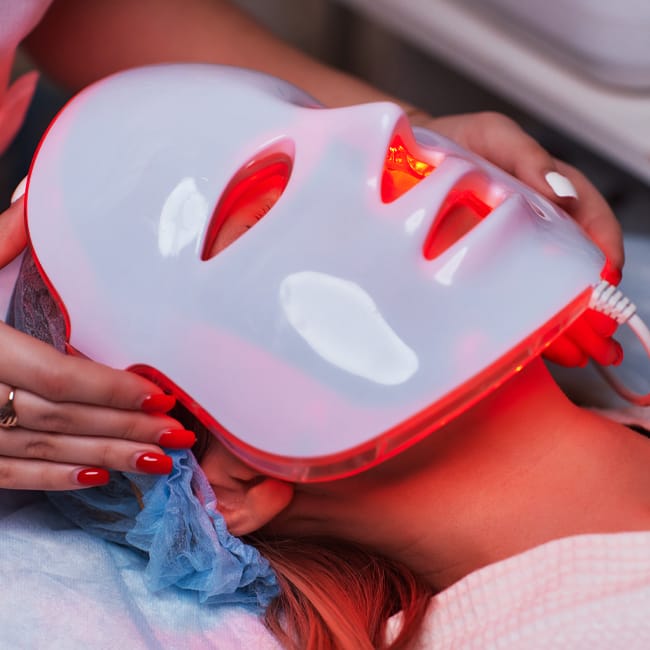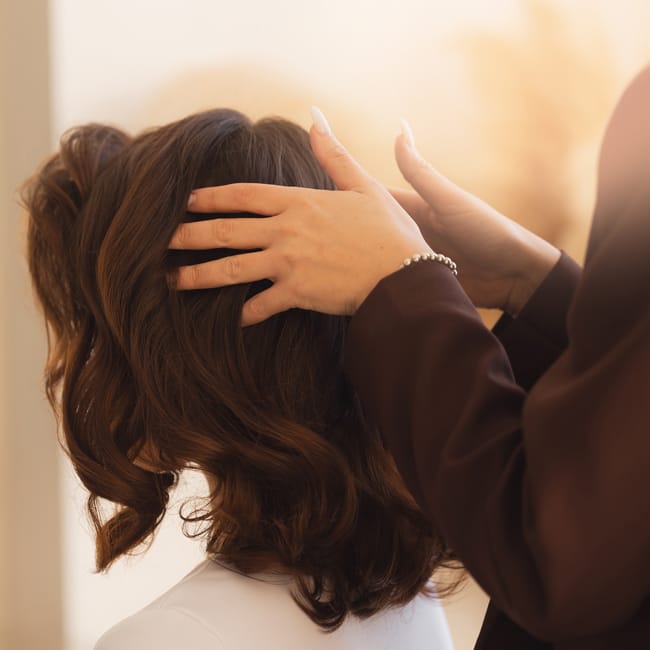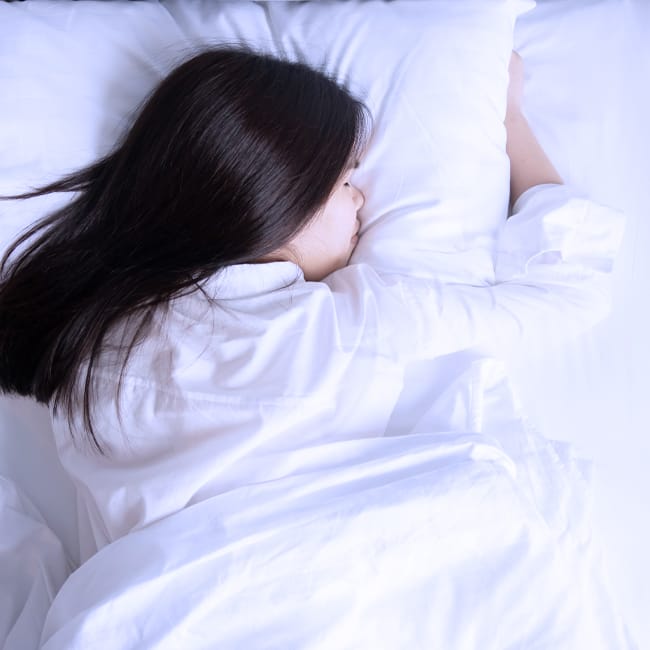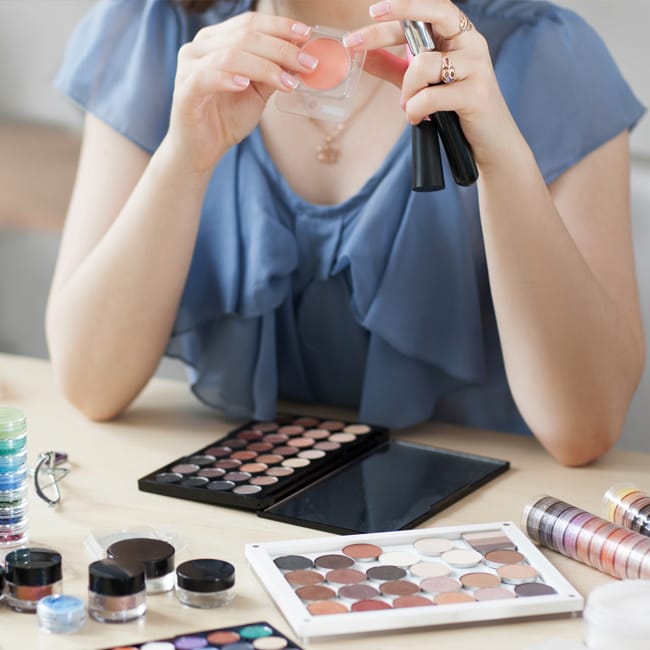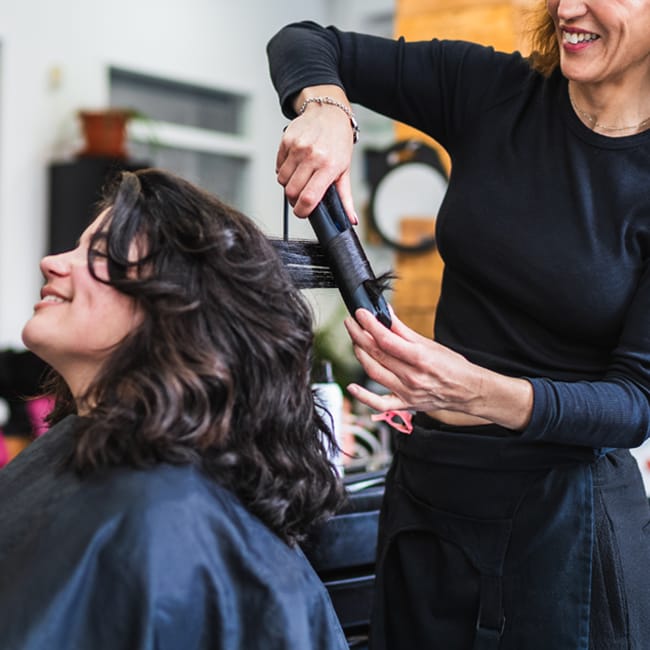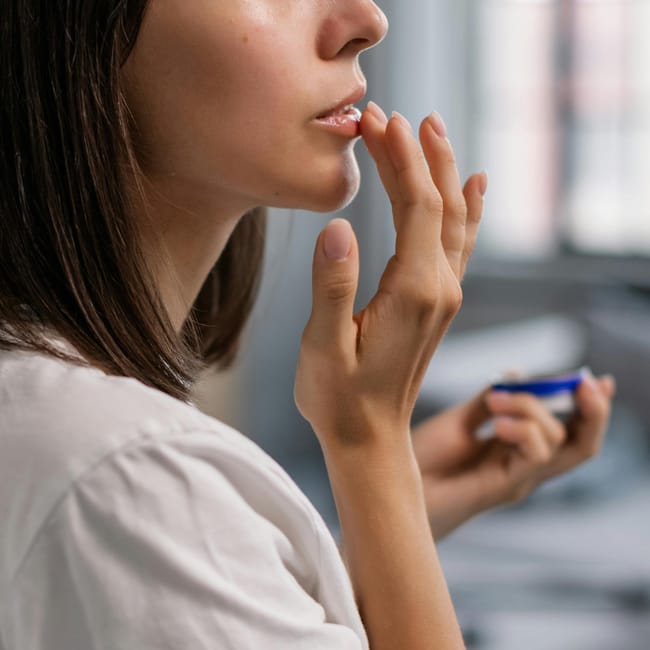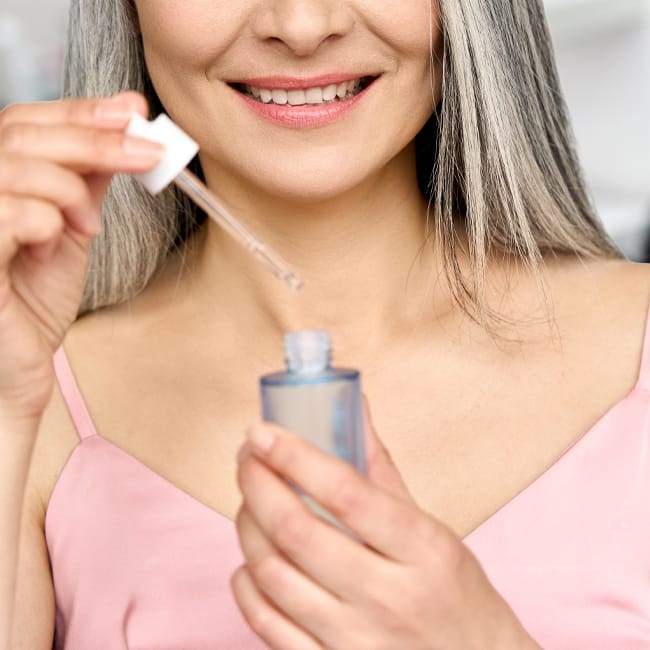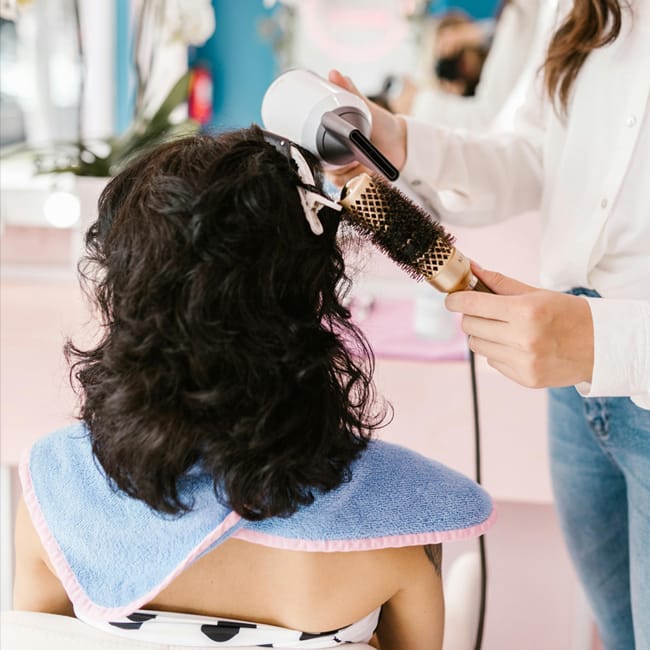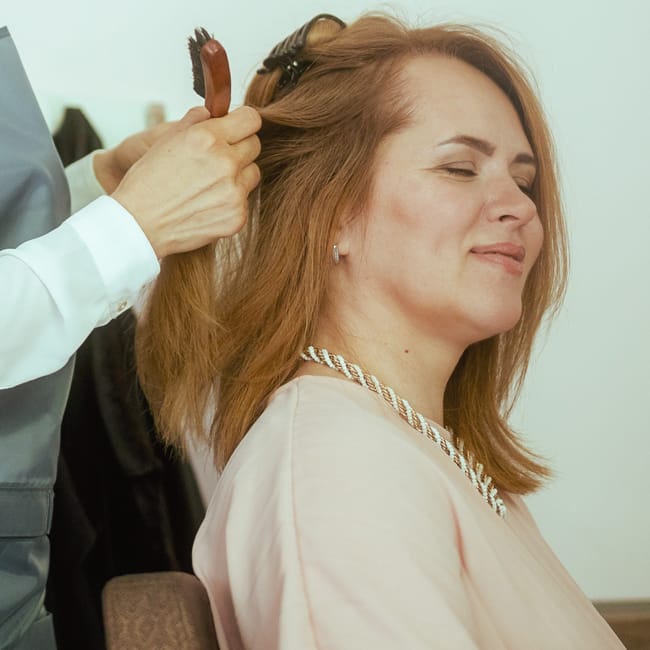As we age, our skin naturally becomes more delicate as it loses elasticity. As the weather gets warmer and more of us spend time outdoors, our skin can become more susceptible to damage from sun exposure, increasing our risk of developing skin cancer.
We spoke to a skin health expert to learn about the two most common types of skin cancer, how to spot warning signs, and what preventative measures women over 40 can take to reduce their risk of developing it.
We caught up with Dr. Elizabeth Hale, board-certified dermatologist, Clinical Associate Professor of Dermatology at the New York University Langone Medical Center, and senior vice president of The Skin Cancer Foundation. Read on for warning signs, tips, suggestions and expert insight into the disease and prevention methods.


First Off, What Kinds Of Skin Cancer Are There?
Hale tells us that it is "so important to educate yourself on how to protect against nonmelanoma" skin cancer, which includes basal and squamous cell carcinomas. "It is actually more common than melanoma, affecting more than 3.3 million Americans each year," she notes.
The most common types of nonmelanoma skin cancers are basal cell carcinoma and squamous cell carcinoma. "Basal cell carcinoma often presents as a pimple that won’t go away, or a shaving cut that doesn’t heal," Hale says, adding that "Squamous cell carcinoma presents like a scaly patch of skin that doesn’t go away with moisturizing cream."

Nonmelanoma skin cancers are usually diagnosed by a healthcare provider in the early stages, she explains, "when spots are still small and have not spread to other parts of the body." If you notice any significant changes in your skin, it is important to see a board-certified dermatologist or your primary care physician right away, she advises.
"With early diagnosis, actinic keratosis (a pre-cancerous skin condition caused by too much exposure to the sun) and nonmelanoma skin cancer are highly treatable," she adds. Regular skin exams, both with a dermatologist and at home, may be able to "save you from an advanced skin cancer diagnosis," she stresses.
With that said, there are two significant and important signs of basal cell carcinoma and squamous cell carcinoma:

Warning Sign #1: Shiny/ Pearly Patch
If you notice a shiny patch on your skin, this could be an indication of basal cell carcinoma, Hale says. "This typically appears as a small, shiny or pearly patch on the skin, and accounts for about eighty percent of new types of skin cancer," she notes. Hale adds that this makes it the "most common cancer diagnosed in the United States."
As seen in a new study Hale shared that was conducted for the Sun Regrets Nonmelanoma Skin Cancer Awareness Campaign, researchers found that "seventy-five percent of millennial and Gen X respondents were mindful of their sun exposure," but they weren’t following proper sun behaviors for adequate protection (sunscreen, educating themselves on skin cancer, etc).

#2: Scaly Red Bump
Another common warning sign of squamous cell carcinoma, Hale points out, is a red bump that might resemble a pimple. This "sometimes arises from precancerous keratosis and often appears as a firm, scaly red bump," she says. Hale adds that this is the "second most common type of skin cancer and the one most directly correlated to chronic sun exposure."
"Education on the proper way to wear sunscreen and what types to wear is so important, as is how to protect yourself against skin cancer, like nonmelanoma skin cancer, which is more common than melanoma," she continues.

Many people have "sun regrets," she adds, like "going outside without sunscreen, using a tanning bed to kickstart their tan and getting a blistering sunburn."
Those sun regrets can "increase the risk for nonmelanoma skin cancer," she warns. Although it is "typically treatable," many people regret their sun exposure habits "only after they’re diagnosed with nonmelanoma skin cancer," she emphasizes.
Hale also provides several prevention tips that you can easily add to your skincare routine at any age (although these pointers are very crucial to protect delicate, aging skin).
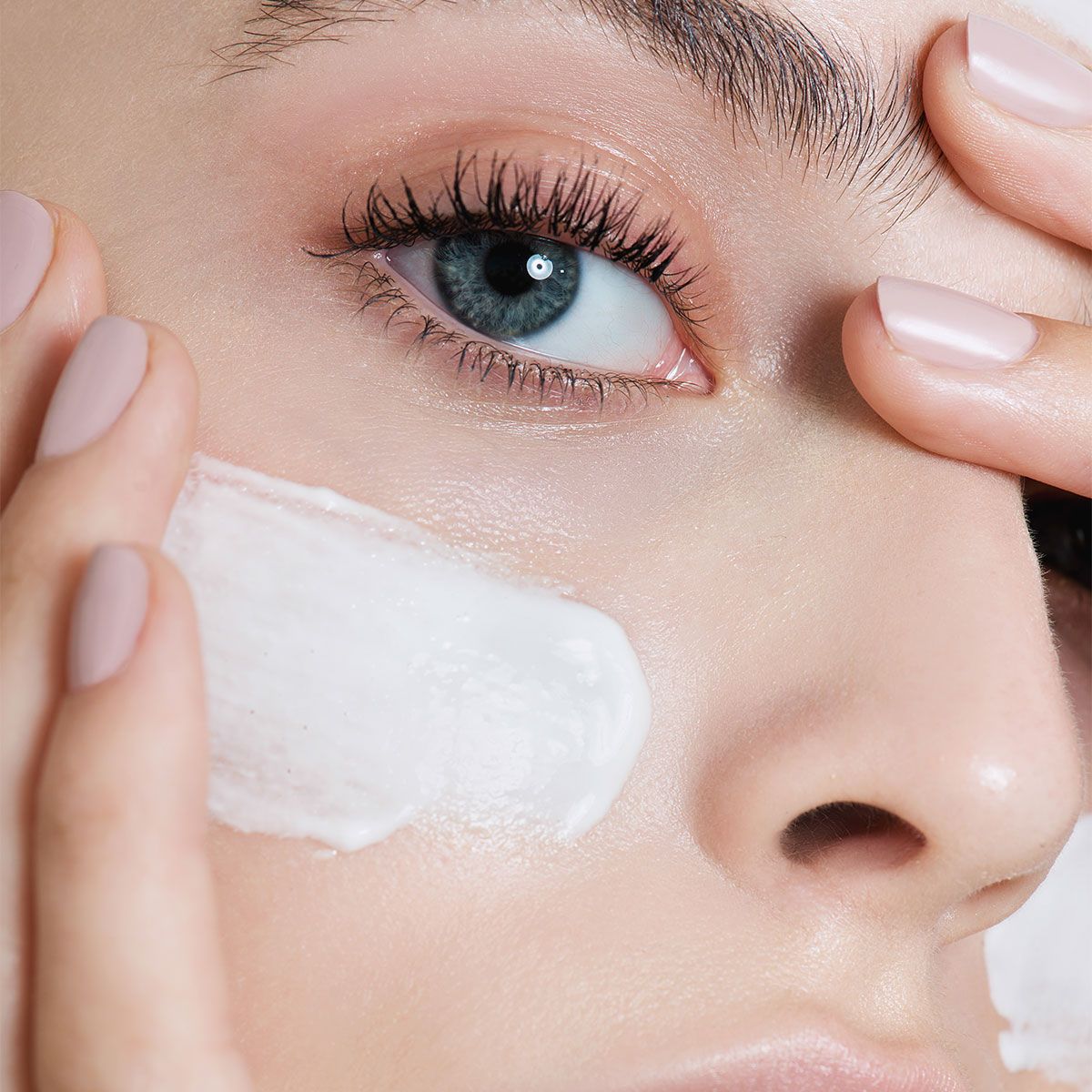
Important Skin Cancer Prevention Methods
Ninety percent of skin cancers are associated with UV radiation, Hale says, and so "wearing sunscreen during every season helps protect against premature aging and skin cancer," she reiterates. She suggests choosing a sunscreen that is "water-resistant and broad spectrum for optimal protection."
As for application, she says to add sunscreen to all sun-exposed skin. "I also recommend that you find shade when outside, wear protective clothing, such as a hat and long sleeves, and ensure you conduct regular skin checks," she recommends.
This summer, if you are outside at the pool or working in the yard, "you need to wear an SPF of 30 or higher to protect against skin damage and skin cancer," she urges, and it "needs to be reapplied every two hours."

Incidental sun exposure includes activities where people find themselves getting their skin "exposed to the sun unexpectedly," for instance, going "to and from a car in a parking lot, watching our children’s sporting events, sitting inside an office next to a window, or driving with the sun directly coming through a window onto our skin," Hale notes.
This, she concludes, is why "protecting your skin with sunscreen every day is important, and wearing it to the beach or pool is not enough."
Even on cloudy days, Hale adds, "ultraviolet rays from the sun can reach you," meaning that applying sunscreen year-round, no matter what is always the best way to prioritize your skin health and prevent suffering from these kinds of skin cancers.




